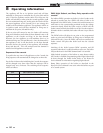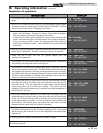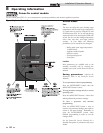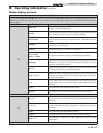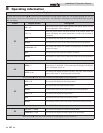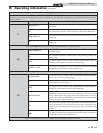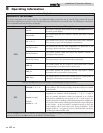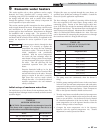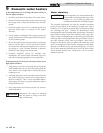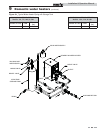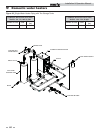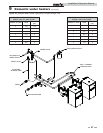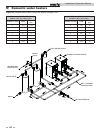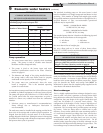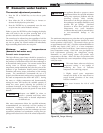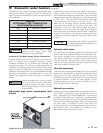
64
If the temperature rise is too low, the water velocity is too
high, adjust as follows:
1. Temperature rise can be increased by slowly closing the
field-installed ball valve in the outlet piping from the
water heater to the storage tank to achieve the proper
temperature rise.
2. Sustained high water velocity and low temperature rise
may result in pitting or erosion of the copper tubes in
the heat exchanger. This is a non-warrantable failure.
Temperature rise must be properly adjusted to achieve
the specified flow rate.
3. Once temperature rise has been properly set, return to
normal operation.
ƽ CAUTION
Temperature rise cannot be adjusted
when the burner is firing at less than
100% of rated input.
Water chemistry
NOTICE
Water temperature rise and maximum flow
data is based on heating potable water with a
hardness of 5 to 25 grains per gallon and
total dissolved solids not exceeding 350 ppm.
The required temperature rise and the standard circulating
pump are sized based on the heating of potable water with a
hardness of 5 to 25 grains per gallon and a total dissolved solids
not exceeding 350 ppm. Consult the manufacturer when
heating potable water exceeding these specifications. Heating of
high hardness and/or high total dissolved solids water may
require a larger circulating pump, an optional Cupro Nickel heat
exchanger and a revised temperature rise specification based on
the water chemistry of the water to be heated. Water with a
hardness of less than 5 grains per gallon will usually have a pH
which can be aggressive and corrosive causing non-warrantable
damage to the heater, pump, and associated piping. Corrosion
due to water chemistry generally shows up first in the hot water
system because heated water increases the rate of corrosive
chemical reactions.
If the temperature rise is too high, the water velocity is
too low, adjust as follows:
1. Check for restrictions in the outlet of the water heater.
2. Be sure all valves are open between the water heater and
the storage tank. Ensure that all ball valves are fully
ported.
3. Check the pump to be sure it is running properly and
that the pump motor is running in the proper
direction.
4. Check diameter and length of the piping between the
storage tank and water heater against the head capacity
of the circulating pump.
5. Be sure the pipes between the water heater and storage
tank are not less than 2 1/2 inch (63.5mm) diameter.
To increase flow and decrease temperature rise, increase
the piping to 3 inch (76.2mm) diameter to decrease
head loss in the piping to the storage tank.
6. Common manifold piping for multiple unit
installations will require larger minimum pipe sizes
and tank circulating tappings to ensure proper flow.
9 Domestic water heaters
Installation & Operation Manual



